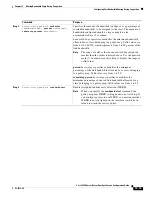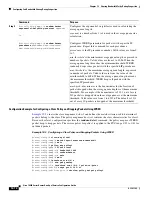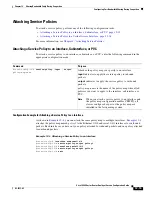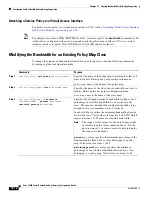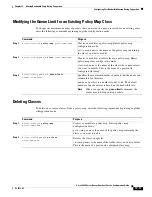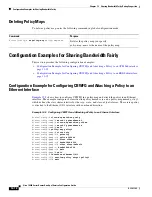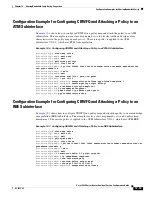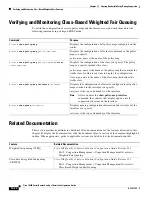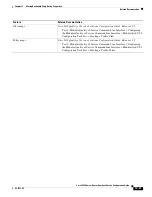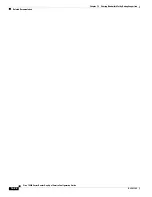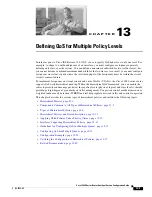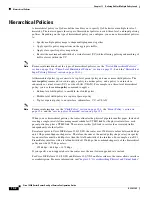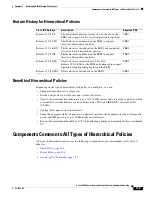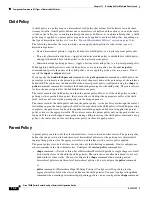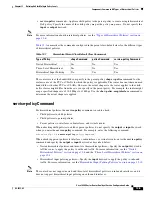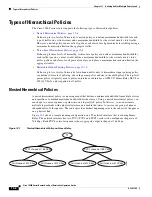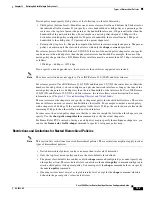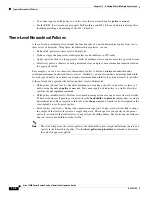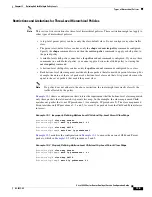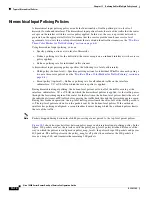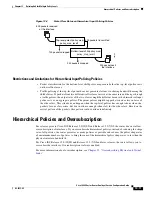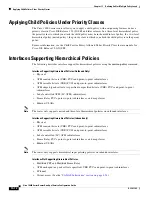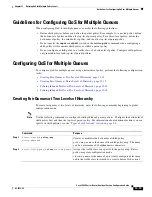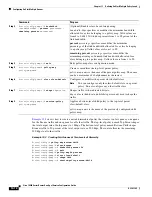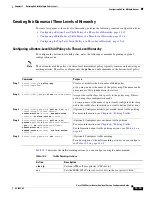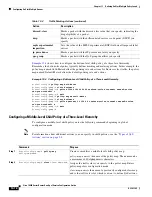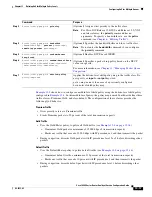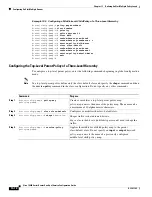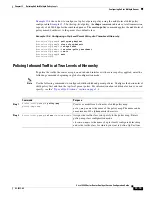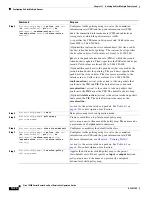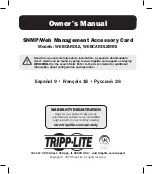
13-5
Cisco 10000 Series Router Quality of Service Configuration Guide
OL-7433-09
Chapter 13 Defining QoS for Multiple Policy Levels
Components Common to All Types of Hierarchical Policies
•
service-policy
command—Applies a child policy to the parent policy to create a single hierarchical
QoS policy. Specify the name of the child policy map as the
policy-map-name
. Do not specify the
input
or
output
keyword.
Note
For more information about hierarchical policies, see the
“Types of Hierarchical Policies” section on
page 13-6
.
Table 13-1
summarizes the commands configured in the parent class-default class for the different types
of hierarchical policies.
The router reserves the bandwidth you specify in the parent policy
shape
or
police
command for the
exclusive use of the PVC or VLANs to which the policy is applicable. The router does not share unused
bandwidth with other PVCs or VLANs. However, the actual shape rate the router applies to the child
traffic classes might differ from the rate you specify in the parent policy. For example, the router might
map a specified shape rate of 10.5 Mbps to 11 Mbps. Use the
show policy-map interface
command to
determine the actual shape rate applied.
service-policy Command
For hierarchical policies, the
service-policy
command is used to attach:
•
Child policies to child policies
•
Child policies to parent policies
•
Parent policies to interfaces, subinterfaces, and virtual circuits
When attaching child policies to child or parent policies, do not specify the
output
or
input
keyword
when you enter the
service-policy
command. For example, enter the following command:
Router(config-if)#
service-policy
policy-map-name
When attaching parent policies to interfaces, subinterfaces, or virtual circuits, enter the
service-policy
command and specify the
output
or
input
keyword as described below:
•
Nested hierarchical policies and three-level hierarchical policies—Specify the
output
keyword to
tell the router to apply the policy to outbound traffic. For more information, see the
“Nested
Hierarchical Policies” section on page 13-6
and the
“Three-Level Hierarchical Policies” section on
page 13-8
.
•
Hierarchical input policing policies—Specify the
input
keyword to apply the policy to inbound
traffic. For more information, see the
“Hierarchical Input Policing Policies” section on page 13-10
.
Note
The router does not support nested and three-level hierarchical policies on inbound interfaces, and it
does not support hierarchical input policing on outbound interfaces.
Table 13-1
Hierarchical Parent Class-Default Class Commands
Type of Policy
shape Command
police Command
service-policy Command
Nested Hierarchical
Yes
No
Yes
Three-Level Hierarchical
Yes
No
Yes
Hierarchical Input Policing
No
Yes
Yes

